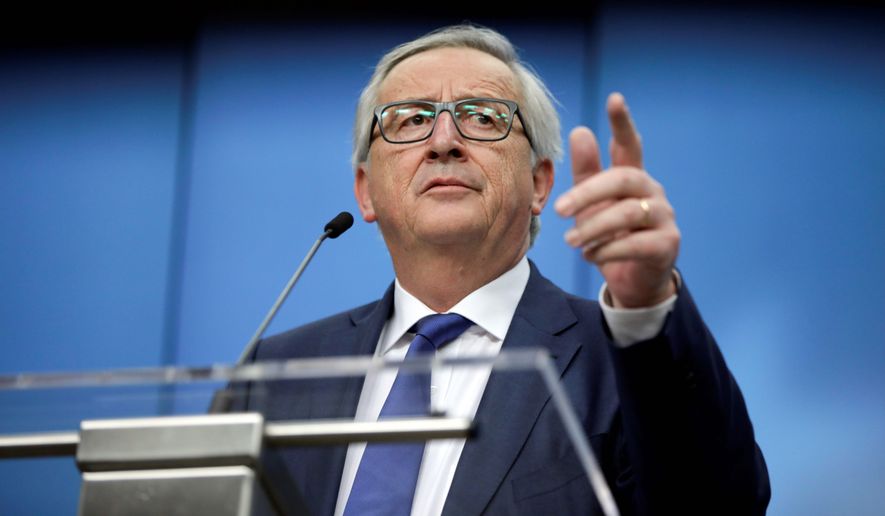
President Trump offered European nations and other countries a zero-tariff deal as a way out of an escalating trade war, but so far he has no takers despite a zero-tariff agreement signed last week between the European Union and Japan.
With a battle over auto tariffs breaking out between the U.S. and Europe, Mr. Trump’s proposal to eliminate all import duties and trade barriers will be on the table again when EU Commission President Jean-Claude Juncker sits down Wednesday at the White House.
“Not going to get ahead of the president’s meeting, but this is something the president has said he would like to see,” said White House press secretary Sarah Huckabee Sanders.
The EU so far would rather fight than deal.
In retaliation against the Trump administration’s steel and aluminum tariffs, the EU imposed tariffs on $3.25 billion of American-made staples including bourbon and motorcycles.
EU Trade Commissioner Cecilia Malmstrom, who will accompany Mr. Juncker to Washington this week, said they will bring a new list of U.S. goods targeted for sanctions if Mr. Trump doesn’t back down.
“The aim of President Juncker’s visit is to try to establish good relations, try to see how we can de-escalate the situation,” Ms. Malmstrom told reporters in Brussels. “We don’t go there to negotiate anything.”
Mr. Trump gets most of the blame — both in the U.S. and abroad — for igniting the trade war in March when he slapped tariffs on steel and aluminum to bolster domestic production of those metals, which that have vital military uses.
The trade fight quickly heated up with the Trump administration hitting $34 billion worth of Chinese goods with tariffs and Beijing responding in kind. The threat of tit-for-tat tariffs with the EU is the next flashpoint....
After winning the White House with a get-tough trade agenda, Mr. Trump insists that he is doing what he promised: standing up for American workers.The president argues that American workers and business suffered for decades because of lopsided trade deals in which the U.S. levies low tariffs while major trading partners such as the EU hammer U.S. goods with steep import duties and other trade barriers.The EU imposes a 10 percent tariff on passenger cars, compared with the 2.5 percent U.S. duty on European autos.A study by the CESifo Institute in Germany found unweighted average EU tariffs of 5.2 percent, compared with the U.S. rate of 3.5 percent.“The EU is by no means the paradise for free traders that it likes to think,” Gabriel Felbermayr, director of the think tank’s Center for International Economics, told the German business newspaper Handelsblatt.Sometimes the tariffs are unbalanced in the opposite direction. The U.S. has a higher, 25 percent duty on imported pickup trucks and sport utility vehicles, while the EU charges the same 10 percent tariff on most vehicles. For commercial trucks, the U.S. levies a 25 parent tariff and the EU 22 percent.At last month’s meeting of the
